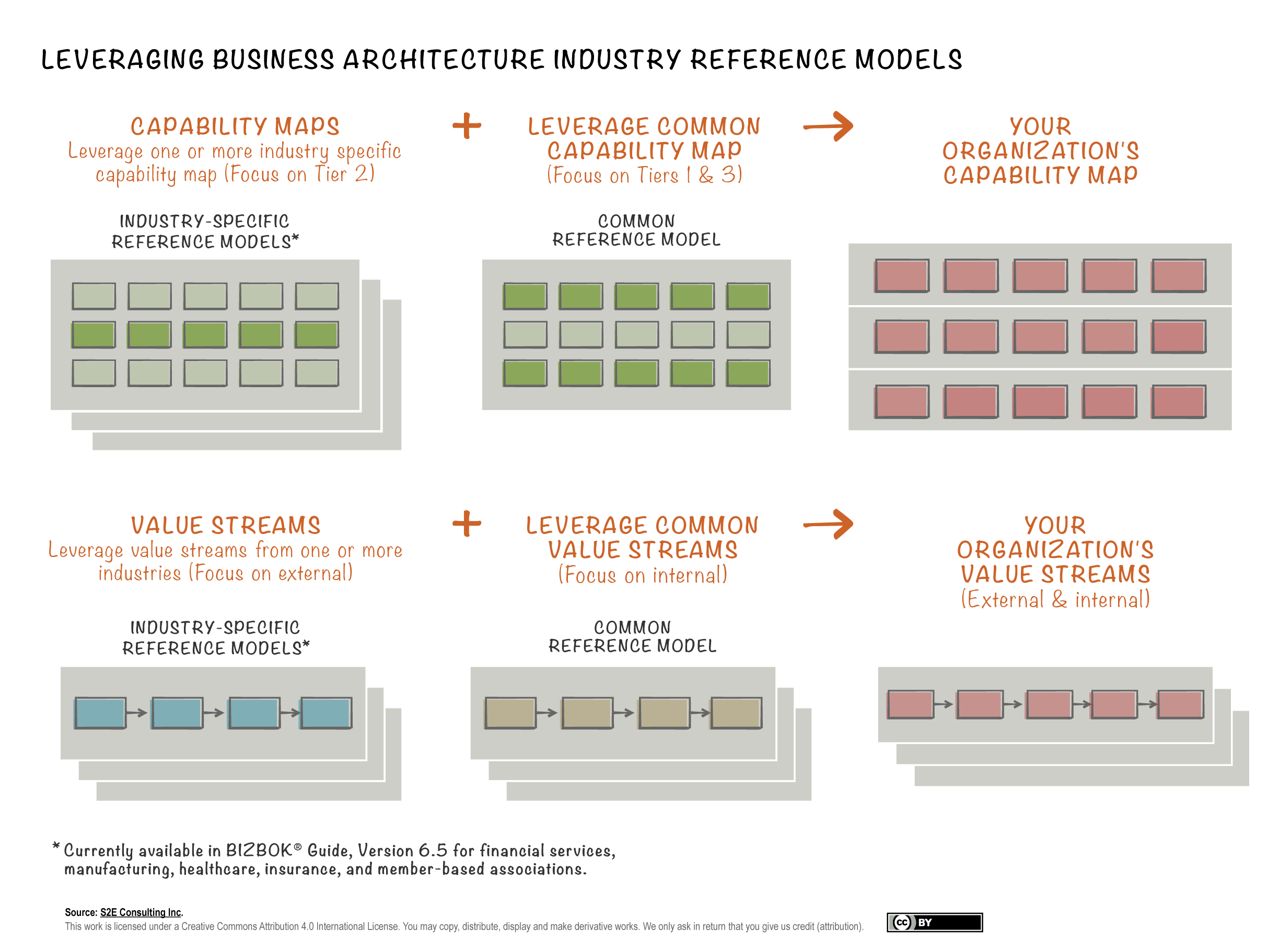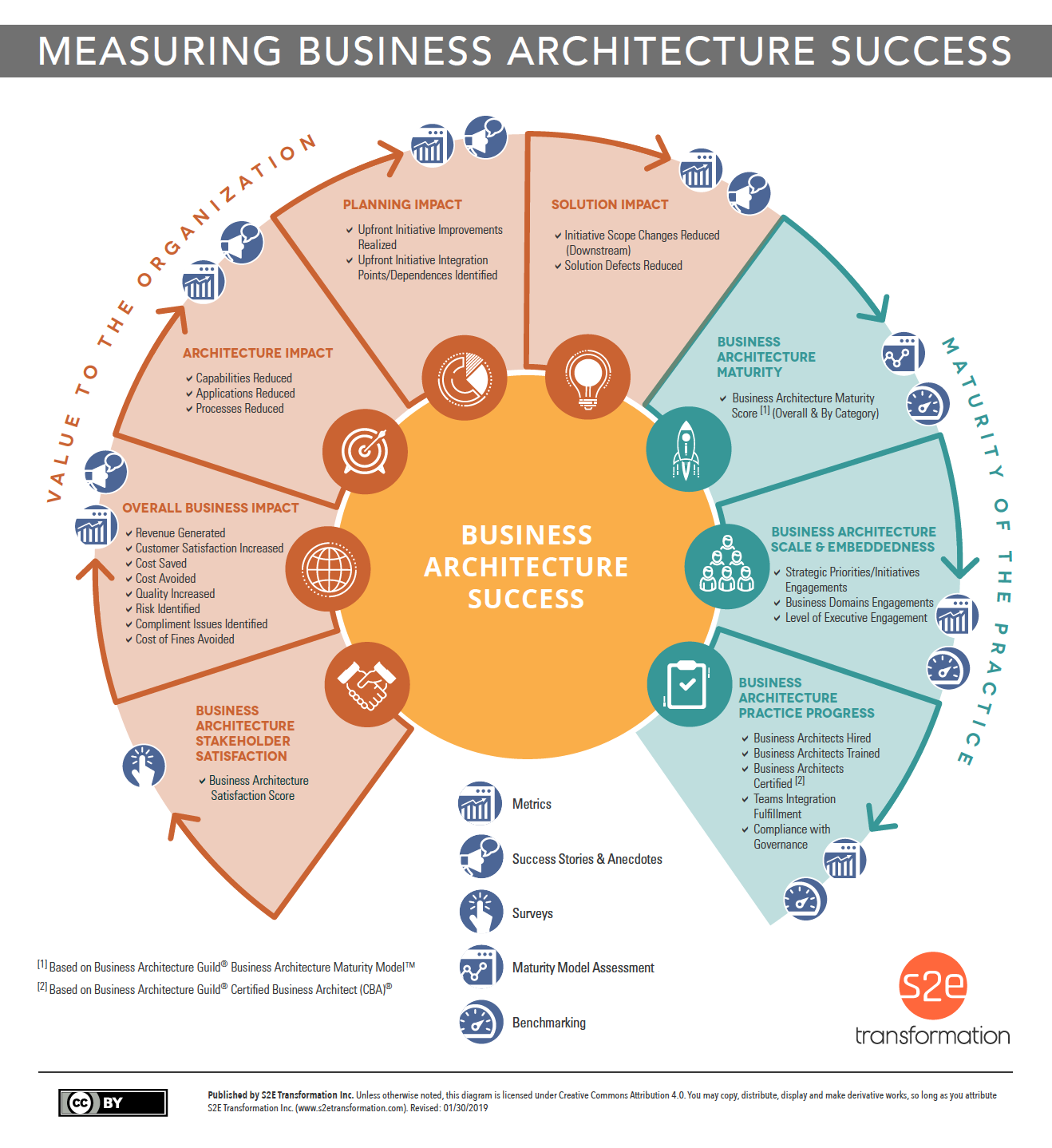![]()
With all of this Olympic spirit in the air, let’s talk about speed. We know that the business architecture knowledgebase is fundamental to the enterprise insights, analysis and ways of designing that are unique only to architecture. But how do we build our knowledgebase fast—especially if we’re just starting our business architecture practice? StraightTalk Posts No. 22 and 23 can help. Here in No. 22, we’ll talk about how we can leverage reference models to accelerate the development of a business architecture knowledgebase, so here goes.
P.S. Post No. 12, A Map of the World — Part 1, is a super helpful refresher about how to document those core domains of business architecture, including capabilities and value streams.
Where do we start?
First the basics. The most important ways to speed up the development of your business architecture knowledgebase in the first place is to:
1. Know what you’re doing (or get some help to accelerate you)
2. Build it out in the smartest way over time
How do we build the business architecture knowledgebase in the smartest way?
As we discussed in Post No. 12, capabilities and value streams are at the heart of every business architecture. Once you have a capability map, a set of value streams, and both of them cross-mapped to each other, now you have a strong foundation that you can actually start using. From this point forward, you can document any other business architecture domains (information, organization, strategies, policies, products, stakeholders, metrics, and initiatives) opportunistically over time for the relevant scope of the business scenarios you are focused on.
BTW, good news, you don’t even need to have a complete capability map or set of value streams to start. The absolute minimum baseline is:
- A capability map (enterprise scope) that includes all level 1 capabilities and then level 2s and level 3s for any key focus areas (e.g. your tier 2 customer-facing / core capabilities)
- A set of your most key value streams (e.g. your externally facing ones for customers and partners)
- Both items above cross-mapped to each other
What are reference models and where do they come in?
In this context, a reference model refers to a set of standard architecture content published by various organizations, usually specifically tailored to an industry (which is why you often hear them called industry reference models). There are various types of reference models, but some key ones are capability maps, information maps and vocabulary, and value streams.
Reference models can be extremely handy as accelerators because they provide content you can use when building your organization’s capability map, value streams, etc. This has helped business architecture teams to save weeks or even months of trying to figure out what content to include and how to structure it. Time saved building the business architecture is time you can spend using it to provide business value instead.
Where do we find industry reference models?
The Business Architecture Guild® has industry-specific reference models available in the BIZBOK® Guide (primarily capability maps and value streams) for financial services, manufacturing, healthcare, insurance and member-based associations. There is also a common reference model which contains capability and value stream content that applies across all industries. While these reference models are continuing to evolve and expand (including for new industries), there are some key benefits to using them:
- They are fully BIZBOK® Guide aligned, which means they can more readily be used “out of the box”
- They are developed by a worldwide community of business architecture practitioners so many different aspects of industries and geographies are represented—and collaboration is the only motive behind their creation, not profit
A number of other reference models are available from different organizations for a variety of industries, such as insurance, banking, telecommunications and retail. You are probably familiar with any that pertain to your industry.
Using industry reference models sounds like a good idea. What’s the catch?
There are two—
1. Reference models shouldn’t be used “off the shelf” – While you can leverage content from reference models, you can’t exactly use them as is. They still need to be adapted to the language, business model and scope of your organization.
2. Not all reference models are created equal – While reference models provide you with lots of fantastic ideas for what your capability maps and value streams might contain, they may actually be collections of other things, like processes, organizational functions or services (even if they are called a capability map). When using a reference model other than one from the BIZBOK® Guide, leverage all of that great content, but structure your capability map and value streams according to the best practice methods described in the BIZBOK® Guide. That’s the key.
How do we use industry reference models?
It’s pretty simple—
To build a capability map for your organization:
- Leverage one or more industry-specific capability map from the BIZBOK® Guide (if you have a hybrid business model, like you offer both insurance and financial services, you may need to use more than one). Focus on the customer-facing / core capabilities in tier 2 in particular.
- Leverage the capability map from the common reference model from the BIZBOK® Guide. Focus on the strategic and supporting capabilities in tiers 1 and 3 in particular, since these apply to most organizations.
- Put #1 and #2 together—and supplement with ideas from other non-BIZBOK® Guide reference models—to create your organization’s capability map.
To build a set of value streams for your organization:
- Leverage one or more industry-specific value streams from the BIZBOK® Guide. Focus on the external value streams for customers and partners (e.g. Acquire Product) in particular.
- Leverage the value streams from the common reference model from the BIZBOK® Guide. Focus on the internal value streams (e.g. Onboard Human Resource) in particular.
- Put #1 and #2 together—and supplement with ideas from other non-BIZBOK® Guide reference models—to create your organization’s full set of value streams.
Here’s a handy diagram for you on how to build your capability map and value streams leveraging reference models.
Anything else?
Remember that involving the business in the creation of your business architecture is absolutely critical for success. The best way to use industry reference models during this process is to leverage them to get smart and prepare for your facilitated sessions with the business. Don’t make your business people study the reference models.
Are there opportunities to get involved in creating industry reference models?
Yes! There is no better way to contribute and learn than getting hands-on. See More Good Stuff for ways to get involved in the Business Architecture Guild® reference model building activities.
Best of luck building your organization’s business architecture knowledgebase—and to whatever teams you are cheering on in these Winter Olympics as well!
More Good Stuff…
Business Architecture Reference Models (BIZBOK® Guide): You can currently view business architecture reference model content in Part 8 of the BIZBOK® Guide (Business Architecture Guild® membership required). Downloadable content will be made available by the Business Architecture Guild® in the future.
Getting Involved In Business Architecture Guild® Reference Model Building Activities: The Guild offers Reference Model Workshops, which are in-person, hands-on events where business architecture practitioners learn how to create capability maps and value streams while simultaneously contributing to the global body of knowledge related to reference models. Check out the Guild Events page for upcoming workshops. For reference, here’s a deck from one of the previous Workshops with loads of great information you can use. Also, you can contribute to the ongoing efforts to build reference models by joining a Guild Collaborative Team. Go to the Join a Guild Group page and then click on one of the Industry Reference Model Teams.
20 Minute Capability Mapping and 20 Minute Value Stream Mapping (Business Architecture Guild® webinars): Two of the most listened to webinars on capability and value stream mapping. These will fill in any gaps you have on the exact steps to take when building a capability map and value streams for your organization. These are Guild classics.
The 25 Most Inspiring Olympic Moments of All Time (Greatist): Just for fun and inspiration. A collection of some top awe-inspiring moments that captured us during the Olympics (up until 2014 anyway).
Tales of Passion (TED Talk): More fun and inspiration. A funny and moving TED Talk by author and activist Isabel Allende on carrying the Olympic flag in the 2006 Winter Olympics in Turin, Italy. She may not have competed in the Olympics, but this talk where she shares her “four minutes of fame” and her humanitarian perspective on women is pure gold.


